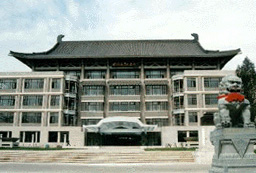| |
|
|
| |
 Take
Peking University's distance education for example. Take
Peking University's distance education for example.
Distance
education provided by Peking University can be divided
into two types: diploma education and non-diploma education.
Types of diploma education are: undergraduate studies
with senior middle school education as starting point;
undergraduate studies with college specialized training
as starting point; and graduate studies. Types of non-diploma
education are: classes of undergraduate courses with senior
middle school education and college specialized training
as starting point; classes of graduate courses; special-topic
seminars by celebrated scholars; high-grade discussion
training classes of various kinds and second-degree classes.
At Peking University, students enrolled in the diploma
education are managed according to a credit system.
Students attend class in accordance with a teaching
plan. They cannot graduate unless they have accumulated
the required number of credits. Those falling short
are required to make up credits within a prescribed
time period.
In providing modern distance education, Peking University
uses a technical program that integrates satellite telecom
with computer networking. Satellite broadcast, which
transmits lectures, is used mainly for classroom teaching,
while the Internet is mainly used to transmit lecture-related
materials, answers to queries and home work and help
spare-time studies. Students may listen to lectures
and study at designed classrooms or, if conditions permit,
may study individually by using the Internet.
Peking University has set up a live-broadcast classroom,
where teachers from different specialities give lectures
according to a plan and teaching activities are broadcast
live via the satellite. It has set up nine distance
education extramural centers at eight provinces and
cities. Students may listen to lectures in the centers'
multimedia classrooms or study individually on the computer
and interact with Peking University teachers via the
Internet for discussions and answers to queries.
Expenses for
study via the Internet is about 10 percent lower than
general higher education. At present, a Peking University
student pays 4,800-5,200 yuan in tuition a year, whereas
his counterpart receiving education via the Internet pays
3,000-4,500 yuan a year. |
|
|